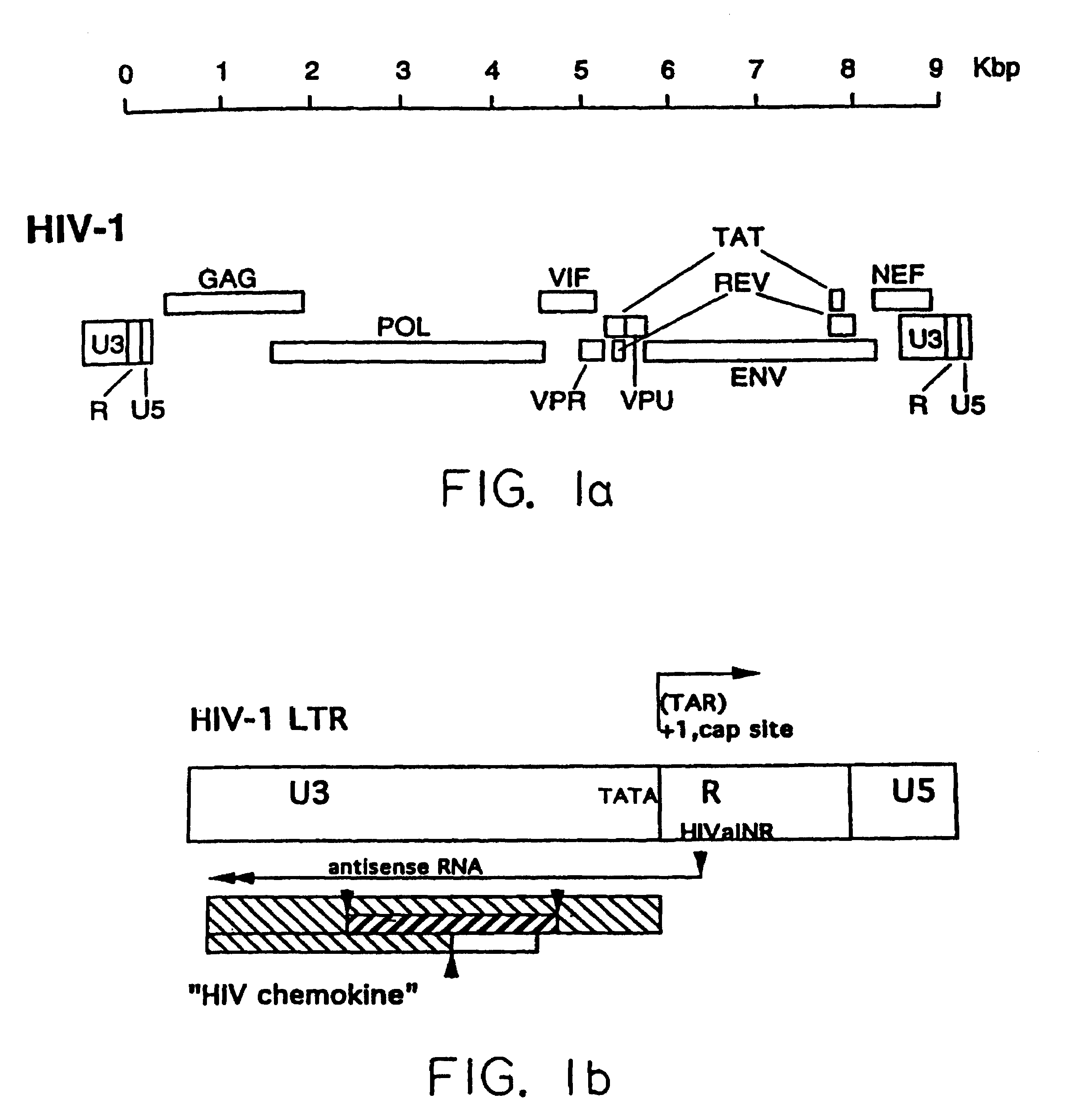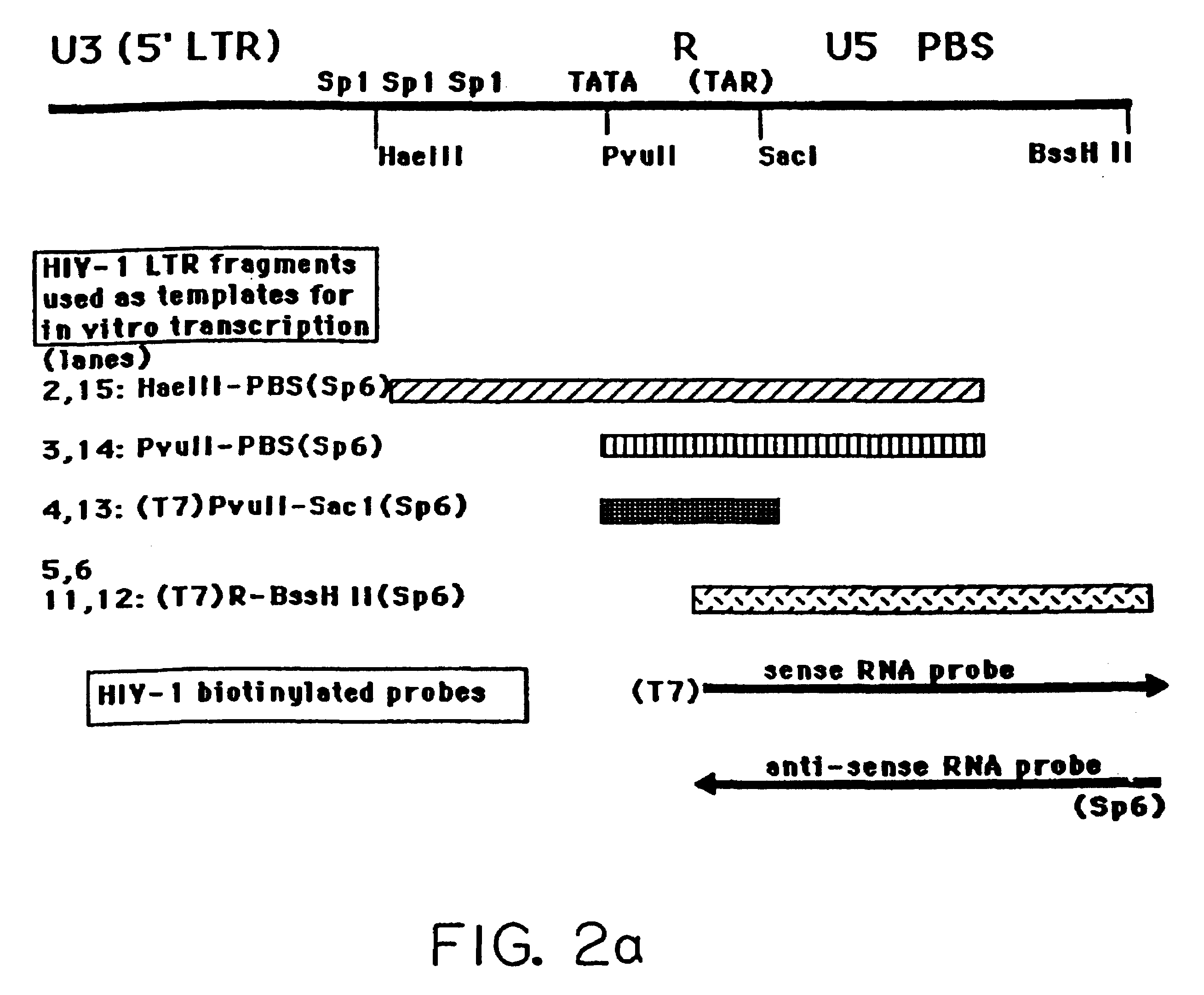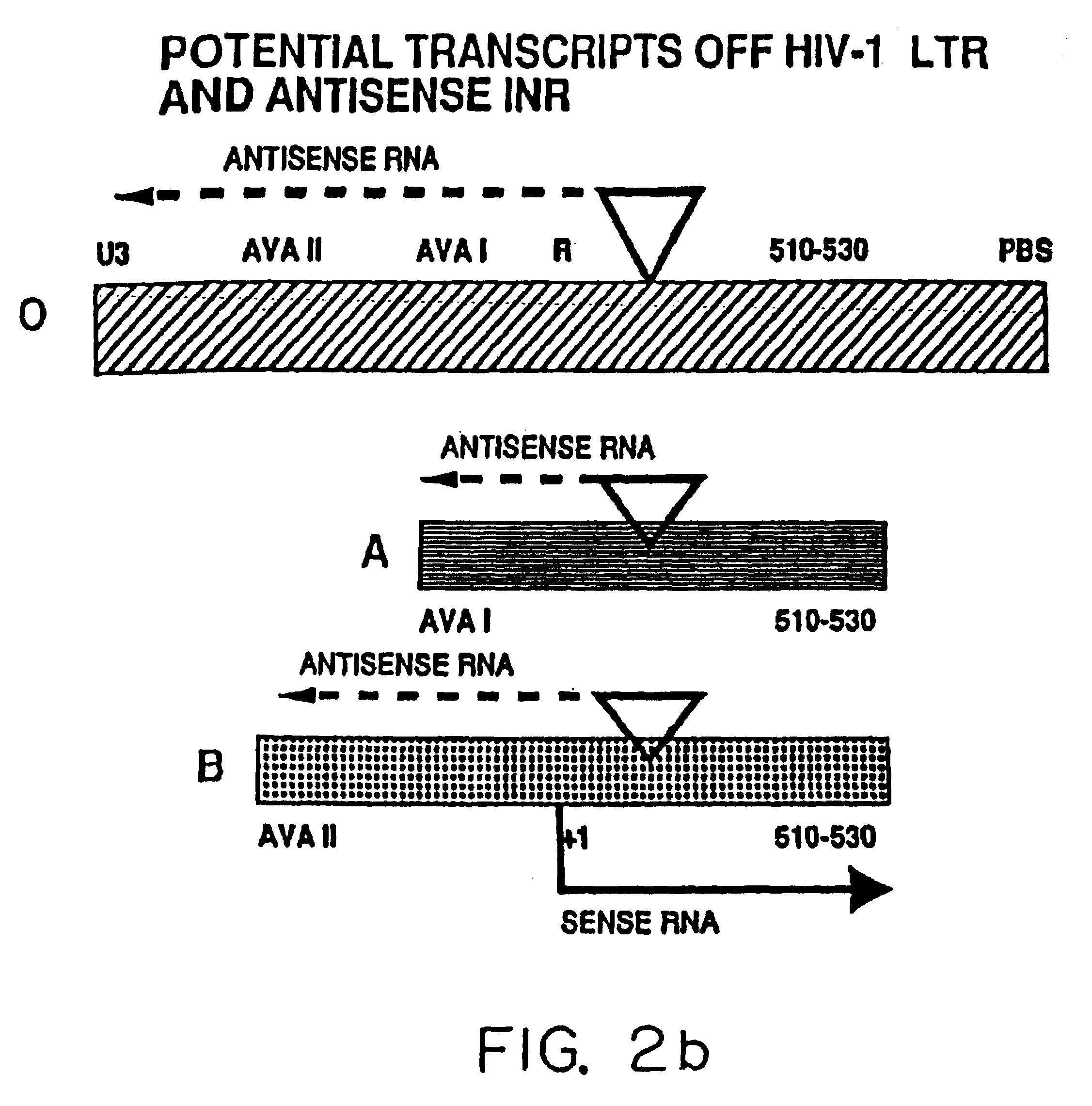HIV antisense proteins
a technology of anti-hiv and proteins, applied in the field of new hiv genes, can solve the problem that cd4 alone is not sufficient for virus entry, and achieve the effect of preventing the spread of viruses
- Summary
- Abstract
- Description
- Claims
- Application Information
AI Technical Summary
Benefits of technology
Problems solved by technology
Method used
Image
Examples
example 1
[0052]A gene encoding an HIV chemokine according to the present invention can be obtained by isolating the HIV dsDNA intermediate from an HIV-infected cell, or may be synthesized in vitro by reverse transcriptase-nucleic acid amplification from the antisense mRNA originating from the HIV antisense initiator, HIVaINR. FIG. 1 illustrates the position of the HIV chemokine gene in relation to other HIV genes and regulatory elements.
[0053]Alternatively, since the HIV chemokine gene is coded for by the plus strand of the HIV, which is complimentary to the minus strand, the sequence of a given strain of HIV chemokine gene can be deduced from the known LTR region sequences of HIV strains available in gene databanks (see also Human retroviruses and AIDS 1995, a compilation and analysis of nucleic acid and amino acid sequences. Ed. G. Mayers., Los Alamos national Laboratory). To further illustrate this embodiment, the nucleotide sequence of the antisense gene encoding the HIV chemokine of lbl...
example 2
[0064]This embodiment illustrates the generation of HIV chemokine RNA transcripts off of the antisense initiator, HIVaINR. Since HIV-1, once integrated into a human host cell chromosomal DNA, is dependent upon eukaryotic transcription factors and RNA polymerases to transcribe its genes (Cullen, 1992, Microbiol. Reviews, 375-394), a eukaryotic transcription system (commercial Drosophila embryo nuclear extract transcription system) that can efficiently transcribe from eukaryotic initiators in vitro was used to investigate whether eukaryotic transcription could initiate from the HIVaINR. Four different HIV-1 LTR fragments, illustrated in FIG. 2a, were generated by polymerase chain reaction using HIV-LTR templates and primers containing bacteriophage T7 or Sp6 polymerases, as previously described (Ludwig et al., 1995, Nuc. Acid Res. 23:3792-3793), which method is hereby incorporated by reference. The fragments are 5′Hae III PBS (Sp6) 3′ which includes two Sp1 sites and TATA box and exte...
example 3
[0067]This embodiment is directed towards demonstration of in vivo transcription from HIV-aINR. An in vivo eukaryotic transcription system may be used to produce mRNA transcripts from human cell lines (e.g., a lymphoid cell line such as Jurkat T cells, or a mononuclear phagocyte cell line) which have been transfected with a eukaryotic vector containing the coding sequence for HIV chemokine operably linked to the HIV antisense initiator or other functional eukaryotic promoter including one or more regulatory elements.
[0068]To further illustrate this embodiment, in vivo transcription from the HIV-aINR was analyzed by reverse transcription-polymerase chain reaction of RNA isolated from human Jurkat T cells which has been transfected with pHIV-CAT. Plasmid pHIV-CAT contains the HIV-1 LTR U3 and R sequences 5′ to the chloramphenicol acetyltransferase (CAT) gene. Transfections of plasmid DNA were performed in the presence of a transfection agent (Transfectam™, Promega). Briefly, plasmid D...
PUM
 Login to View More
Login to View More Abstract
Description
Claims
Application Information
 Login to View More
Login to View More - R&D
- Intellectual Property
- Life Sciences
- Materials
- Tech Scout
- Unparalleled Data Quality
- Higher Quality Content
- 60% Fewer Hallucinations
Browse by: Latest US Patents, China's latest patents, Technical Efficacy Thesaurus, Application Domain, Technology Topic, Popular Technical Reports.
© 2025 PatSnap. All rights reserved.Legal|Privacy policy|Modern Slavery Act Transparency Statement|Sitemap|About US| Contact US: help@patsnap.com



